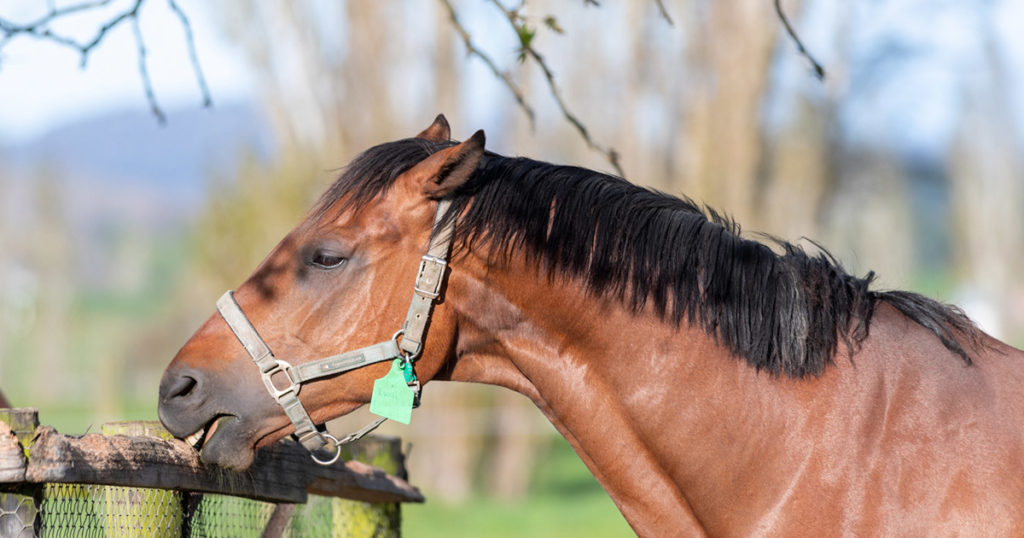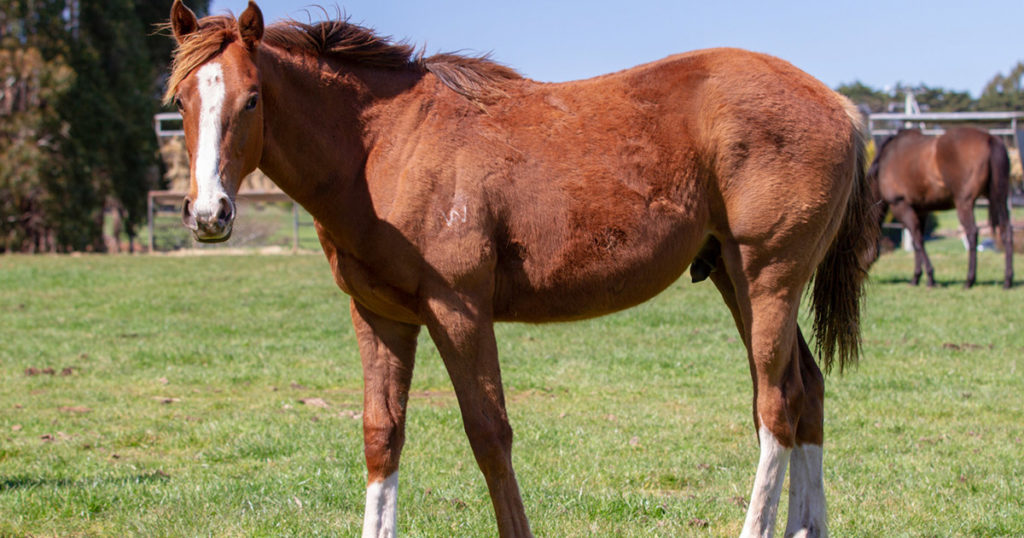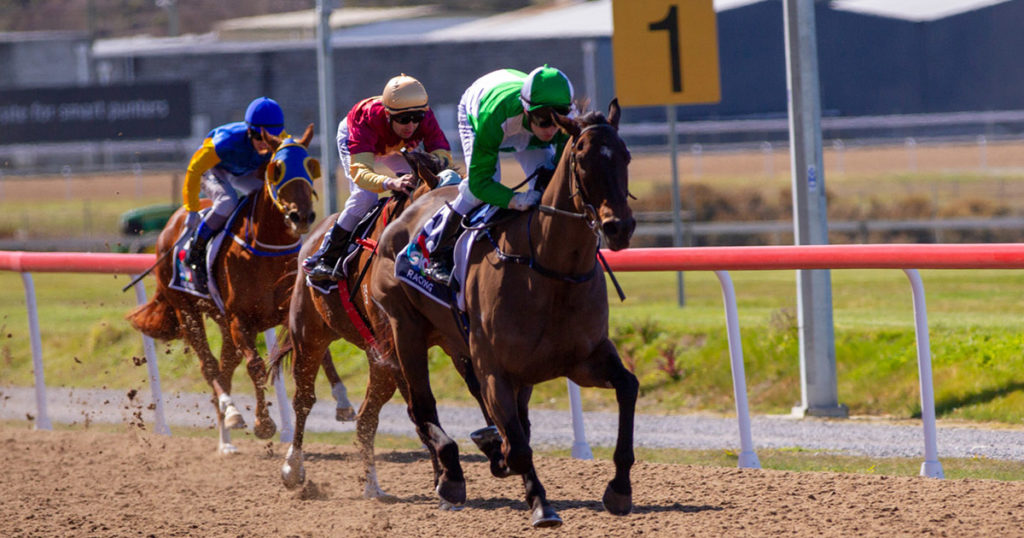HELP! My horse won’t put on body condition…
The horse that fails to thrive can be one of the most frustrating challenges for owners, trainers, breeders and riders. The horse who no matter how much you feed it, how many times you drench (worm) it, how long it stays on medications for gastric ulcers or how many supplements you add to its feed- it still fails to put on significant weight, looks lacklustre and just doesn’t thrive like it should. Not to mention costing you an absolute fortune to keep! It’s common (and reasonable) to think that the more you feed the horse (particularly high energy grains and/or concentrates) the more weight and body condition it should gain. If a horse consumes excess calories (energy intake) relative to energy expenditure (calories out) then we would expect weight gain to occur. And whilst the energy equation is an important consideration in such horses, if it was the sole reason in all cases, then horses that fail to thrive would be in the minority. The number of clinical cases where the primary reason for the owner contacting me is to help their horse gain weight suggests that this certainly is a common complaint. So why does it occur and what can we do to help these horses put on condition and thrive?
Potential contributors to failing to put on weight/condition
Like many health challenges and conditions in our equines, there are multiple factors which can contribute to failure to put on weight. Generally, it comes down to a combination of factors, not just one single reason. In the absence of a serious health condition in our horses, which should be ruled out by a thorough case history and veterinary diagnostics if indicated, the below are the most common reasons I see in clinical practice contributing to horses failing to thrive:
- Poor gastrointestinal (GI) health
- Insufficient fibre (particularly long-stem fibre in the diet)
- The volume of ‘individual hard feeds’ (ie grains and concentrates) too large per feed
- Horses being fed the wrong ‘type’ of feed
- Nutritional insufficiencies/deficiencies and imbalances (largely minerals and sometimes protein) which influence metabolic function (for example thyroid function)
- Side effects of certain medications (such as antibiotics, non-steroidal anti-inflammatories and corticosteroids)
- The use of gastric ulcer medications
- High stress levels in the horse
- High levels of pain in the horse
- High levels of inflammation in the horse
- Poor dental health
- High parasite load
- Inappropriate/insufficient exercise stimulus
- Windsucking/Cribbing
Poor Gastrointestinal Health
This is by far the most significant contributing factor relating to failing to put on/maintain weight in clinical cases I see. Poor gastrointestinal health can relate to compromised integrity of the cells lining the GI tract (gastric mucosa), imbalances in the microflora (the population of microbes, largely bacteria) of the GI tract and inflammation of the GI tract. These issues generally occur together. Gastric and/or colonic ulcers are also relevant in many cases, as a result of changes in the aforementioned factors. Many things can contribute to poor GI health (such as insufficient long-stem fibre in the diet, the use of certain medications- including ulcer medications, stress, travel, dehydration, just to name a few). To read more on these topics see articles:Hay, Stomach (Gastric) & Hindgut (Colonic) Ulcers; Hindgut (Colonic) Ulcers in Horses and Ponies; Inflammation & Non-Steroidal Anti-Inflammatories in Horses; Ulcers in Horses: The importance of understanding how medications work; Ulcer Medications: What Nobody Tells You and What You Need To Know; Fibre, Chewing and Gastrointestinal Health.
Insufficient Fibre
Sufficient dietary fibre is crucial in the diet of our horses’ and ponies’. In addition to promoting good GI health (see paragraph and articles above), fibre also serves as an important energy source in our horses. It’s easy to think that a horse who needs more condition needs more calories (the relative energy content of fibrous feeds such as hay is much lower compared to grains and most concentrates). Yet in addition to promoting healthy GI microflora, fibre serves as an important energy source for these microbes. They ferment the fibre to produce short chain fatty acids (SCFA) also known as volatile fatty acids (VFA). These fatty acids are a valuable ‘cool’ energy source for our horses, in addition to producing important anti-inflammatory compounds and promoting and maintaining a healthy GI tract. If we don’t feed our horses sufficient fibre, the lose out on these benefits. We can’t successfully ‘out-supplement’ insufficient fibre in our horse’s diets!
Volume (size) of ‘hard’ feeds
Horses have very small stomachs relative to the size of the animal, accounting for only 10% of the volume of the digestive system. Our horses are designed to be constantly ‘grazing’, which allows optimal digestive function. When our horses are fed large meals, which require relatively little chewing (such as grains and concentrates) the food passes through their stomach quickly. This results in the feed entering the small intestine largely undigested. Consequently, the horse isn’t able to extract the energy and nutrients from the feed properly, and the undigested feed enters the hind-gut, where it ferments and causes changes in the pH and microflora population. Whilst fibre passes largely undigested into the hindgut and is naturally fermented here (and provides significant benefits because of this), no other feed should be fermented in the hindgut. In a mature horse, individual meal sizes should be no more than 2.3kg (5 pounds) in volume.
Horses being fed the wrong ‘type’ of feed
Feeding horses a commercial pelleted or mixed concentrate feed can be an efficient way to help meet nutrient requirements. However, not all pelleted or commercially manufactured feeds are created equally. They vary vastly in ingredients contained, nutrient and energy content. Feeds on the market range from low calorie mineral balancers to high energy concentrates. Feeding a low calorie balancer (even in large quantities) won’t significantly contribute to energy intake in our horses. Hence, selecting an appropriate feed is really important to help the horse failing to thrive.
Feeding large amounts of hard-to digest grains or concentrates is also a common occurrence in the horse failing to thrive. On paper it can make logical sense to feed the lightly conditioned horse plenty of grains as they are generally high in calories. Yet these grains aren’t always readily digested, and feed that isn’t digested properly won’t help to condition our horses well. For example corn (even cracked/rolled corn), despite being relatively high in starch and calories has very poor digestibility. This means our horses are not able to efficiently utilise the calories in it, in addition to it also adversely effecting GI microflora, compounding the whole problem. Remember that many high calorie concentrate/manufactured feeds contain large amounts of grains.
Nutritional insufficiencies, deficiencies and imbalances
In addition to sufficient energy (calories), our horses need protein (made up of amino acids), fats, vitamins and minerals to serve multiple different functions in the body. Sufficient protein is needed to aid in muscle hypertrophy (growth) thus plays an important structural role in conditioning horses. Additionally, the amino acids found in protein are needed for the production and activity of digestive enzymes. Digestive enzymes help our horses to properly break down their feed, allowing for the absorption of energy and nutrients. Along with fats, vitamins and minerals, protein also plays key roles in supporting metabolic function and the production of key hormones needed to promote healthy growth in our horses. Insufficiencies or relative imbalances in these key nutrients can both directly and indirectly affect a horse’s ability to put on body condition.
Side effects of certain medications
Particular medications commonly used in our horses have the ability to impact their body condition. Antibiotics, non-steroidal anti-inflammatory drugs (NSAIDs) such as phenylbutazone (bute) and flunixin (Banamine), and corticosteroids all impact a horse’s GI microflora and the integrity of their stomach lining. Lesser considered medications include omeprazole and ranitidine (the key active ingredients in most ulcer medications), which interfere with a horse’s ability to properly digest and absorb their feed, and also impact their GI microflora. Other medications such as diuretics (Furosemide/Lasix) influence the absorption, metabolism and/or excretion of key nutrients needed for healthy metabolic function and conditioning in a horse. Medications such as Clenbuterol (Airway Gel, Claire Gel) and synthetic thyroid hormone (L-Thyro) directly influence metabolic rate in a horse, commonly resulting in weight loss or inability to put on sufficient condition.
The use of gastric ulcer medications
It can seem quite ironic- medications commonly used to help aid in healing of gastric ulcers can actually compound the challenge of gaining condition in the poor doer. Gastric ulcer medications work by shutting down the production of hydrochloric acid. Yet without adequate hydrochloric acid our horses can’t properly digest, absorb and metabolise their feed and nutrients in it. As a result, feed passes largely undigested in to the hindgut, adversely impacting GI microflora. To learn more about the actions of ulcer medications, visit the articles: Ulcers in Horses: The importance of understanding how medications work; Ulcer Medications: What Nobody Tells You and What You Need To Know
High stress levels and/or high levels of pain
High and/or continued levels of stress and/or pain in our horses results in changes in the production of the hormone cortisol and chemicals which promote inflammation in the body. This in turn commonly results in the breakdown of muscle tissue, leading to difficulty putting on/maintaining condition- largely lean muscle mass (the kind of condition we want on our horses). Changes in GI blood flow and microflora balance also commonly occur as a result of stress, further impacting digestion. Additionally gastric and/or colonic ulcers, which frequently develop as a result of chronic stress, can further compound the problem. To read more on the systemic effects of injury and pain, see the article: Injury and Pain in our Horses and Ponies
High Levels of inflammation
Long-term (chronic) inflammation in horses reduces the synthesis of muscle protein. It also increases the rate at which muscle proteins break down. Special types of molecules called inflammatory cytokines, which are involved in cell signalling during inflammation, trigger the release of cortisol and particular neurotransmitters (chemical messengers in the body). The combination of cortisol and these neurotransmitters disrupt cellular metabolism and alter a horse’s metabolic rate, which can heighten the breakdown of muscle tissue.
Poor dental health
Dental health can influence a horse’s ability to put on and/or maintain body condition in several ways. Sharp edges on teeth, loosened teeth, tooth infections, tooth loss or uneven wear of teeth can contribute to pain and compromised ability to chew feed well. Properly chewing feed is an important part of initiating digestion in the horse, allowing it to adequately utilise feed.
Less commonly considered aspects of dental health in our horses are gingivitis (gum inflammation) and periodontitis (where the inner layer of the gum and bone pull away from the teeth and cause pockets of air between the gums and teeth). These conditions affect horses in a similar way to humans. Gingivitis usually precedes periodontitis and begins when bacteria in the mouth proliferate around the teeth and gums. The build-up of large numbers of bacteria that attack the gingiva or gums leads to inflammation. It’s important to note that as the disease progresses and the gums become swollen and bleed, bacteria are able to enter a horse’s bloodstream and travel around the body. This can result in high levels of systemic inflammation and adverse changes to gut microflora, thereby influencing overall health and digestive function. To read more on the systemic effects of dental health in horses, visit: Bad Breath in Horses
High parasite (worm) load
Did you know that there are more than 150 types of parasites that affect horses? The four most common types are strongyles, ascarids, tapeworms and bots. High numbers of parasites (a high parasite load) can contribute to inflammation throughout our horses’ digestive tracts, damage to the lining of the stomach and intestines and gastric and/or colonic ulcers. These inhibit our horses’ ability to properly digest and absorb their feed.
Simply drenching/worming our horses more frequently is generally not the answer. This can contribute to increased parasite resistance to anthelmintics (drugs used to help kill parasite), in addition to impacting a horse’s GIT microflora. Best practices involves the use of appropriately timed faecal egg counts, assessing parasite burden in the horse, and strategic drenching using appropriate anthelmintics. For more information on best drenching/deworming practice visit: Drenching/Deworming with Panacur
Inappropriate/insufficient exercise stimulus
For our horses to develop and maintain muscle mass and body condition there are several important components. Good GI health to properly digest, absorb and metabolise nutrients needed for protein synthesis and muscle cell growth (hypertrophy) are essential. Our horses also need to be fed a diet which meets both their protein and calorie requirements. An easily overlooked factor is appropriate type and quantity of exercise. Our horse need to be engaging the correct muscles in the correct frame to develop good muscle growth and conditioning. Horses who are not exercised adequately, and/or not engaging the correct muscles when working will fail to capitalise on their ability to develop good muscle mass. Horses who are spelling, injured or on box/stall rest will likely not maintain their best muscle mass. A useful analogy can be to think of a person who wants to gain muscle mass or muscle definition. If they eat plenty of protein and calories, yet spend their day largely inactive, sitting on the couch and not exercising, they will fail to properly develop optimal muscle strength and definition. On the other end of the spectrum, someone who trains really hard in the gym, but fails to eat enough quality food to fuel their training will not maximise muscle development gains. It takes a combination of both training and proper fuelling! To read more, visit: What Supplements are best for building Topline?
Windsucking/Cribbing
Windsucking (also known as cribbing or crib-biting) in horses is a stereotypy, or repetitive behaviour which can significantly impact a horse’s ability to put on or maintain weight.
In addition to weight loss and overall poor condition, wind sucking can result in abnormal development of muscles in the neck, and excessive wear of teeth- affecting a horse’s ability to chew properly. Cribbing can interrupt a horse’s daily routine, occupying several hours per day. This reduces time spent grazing and foraging. Cribbing is commonly associated with digestive discomfort, gastric ulcers and imbalances in specific neurotransmitters- all factors which are known to influence a horse’s ability to properly digest, absorb and metabolise their feed. To read more about windsucking/cribbing visit: Why do horses wind suck and crib bite?
The horse who fails to gain or maintain adequate weight and muscle mass can be frustrating. Whilst it is common to look at one likely reason for their weight struggles, there are generally several factors contributing to the state of the horse’s health. The good news is that when contributing factors are properly identified and addressed, the horse who once had difficulty putting on and/or maintaining weight can flourish. Additionally, by correcting the underlying issues, you are helping to facilitate the best health and performance in your horse.

Camilla Whishaw is a highly regarded, experienced horsewoman and naturopath, helping to holistically treat and manage a broad range of equine health conditions and injuries, with a passion for mare and stallion fertility.
As a world-renowned practitioner, presenter, author, and consultant in the field of Equine Naturopathy, Camilla shares her knowledge through keynote presentations, interviews, lectures, panel sessions, and workshop training.





